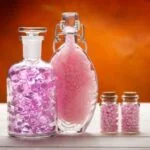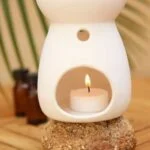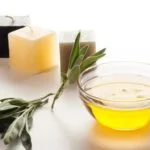Peppermint oil has been used for centuries for its various therapeutic properties, and one of the most popular ways to harness its benefits is through aromatherapy. This article will delve into the different aspects of using peppermint oil for aromatherapy, from its benefits and different methods of use to safety precautions and DIY blends.
Peppermint oil is a versatile essential oil that can be used in aromatherapy to promote relaxation, alleviate stress, and improve mental clarity. In this article, we will explore how to use peppermint oil for aromatherapy to reap its numerous benefits.
Firstly, we will discuss the benefits of using peppermint oil for aromatherapy, including its ability to alleviate headaches, improve digestion, and boost energy levels. Then, we will delve into the various ways to use peppermint oil in aromatherapy, such as through inhalation, topical application, or diffusion. Additionally, we will provide guidelines for choosing the right type of peppermint oil specifically for aromatherapy purposes.
The Benefits of Using Peppermint Oil for Aromatherapy
Peppermint oil is a versatile essential oil that has been used for centuries for its various health and wellness benefits. When it comes to aromatherapy, peppermint oil is particularly popular due to its refreshing and invigorating scent, as well as its numerous therapeutic properties. In this section, we will explore the specific benefits of using peppermint oil for aromatherapy and how it can enhance your overall well-being.
One of the key benefits of using peppermint oil for aromatherapy is its ability to promote mental clarity and alertness. The crisp, minty aroma of peppermint oil can help improve concentration, memory, and cognitive function, making it an ideal choice for boosting productivity and focus during work or study sessions. Additionally, inhaling peppermint oil can also help alleviate feelings of fatigue and mental exhaustion, providing a natural energy boost when you need it most.
In addition to its mental benefits, peppermint oil is also known for its soothing effects on the body. When used in aromatherapy, peppermint oil can help relieve muscle tension and discomfort, making it a great choice for massage blends or post-workout recovery. Its cooling sensation can also provide relief from headaches and migraines when applied or inhaled appropriately. Overall, the unique combination of mental clarity and physical comfort makes peppermint oil a valuable addition to any aromatherapy practice.
Moreover, the use of peppermint oil in aromatherapy has been linked to improving respiratory function. Inhaling the fresh scent of peppermint oil can help clear nasal passages and support healthy breathing, making it an effective aid for those dealing with seasonal allergies or congestion. Its anti-inflammatory properties may also contribute to reducing symptoms associated with respiratory conditions such as asthma or bronchitis when used in conjunction with other treatments prescribed by a healthcare professional.
| Benefits | Information |
|---|---|
| Mental Clarity | Peppermint oil promotes improved concentration, memory, and cognitive function |
| Physical Comfort | It helps relieve muscle tension/discomfort while providing relief from headaches/migraines |
| Respiratory Health | Inhaling the scent of peppermint clears nasal passages/supports healthy breathing; useful for allergies/congestion/ respiratory conditions like asthma/bronchitis |
Different Ways to Use Peppermint Oil in Aromatherapy
Peppermint oil is a versatile and popular essential oil that can be used in various ways for aromatherapy. Aromatherapy is the practice of using essential oils to promote physical and psychological well-being. Peppermint oil, with its invigorating and refreshing scent, is a great choice for aromatherapy as it offers a wide range of benefits.
Diffusion
One of the most common ways to use peppermint oil for aromatherapy is through diffusion. You can add a few drops of peppermint oil to a diffuser filled with water and let the aroma fill the room. This method not only helps freshen up the air but also provides a cooling and energizing effect, making it perfect for enhancing focus and concentration.
Topical Application
Another way to use peppermint oil for aromatherapy is through topical application. When diluted with a carrier oil such as coconut or almond oil, peppermint oil can be applied to the skin for its calming and soothing effects. Before applying it to larger areas of skin, it’s important to perform a patch test to ensure there are no allergic reactions.
Inhalation
Inhalation is another effective method for using peppermint oil in aromatherapy. You can add a drop or two of peppermint oil to a tissue or cotton ball and inhale the aroma directly, or even add a few drops to hot water and create steam inhalation. This method can help clear sinuses, relieve headaches, and provide an overall sense of rejuvenation.
Overall, there are many different ways to use peppermint oil for aromatherapy, allowing individuals to personalize their experience according to their preferences and needs. Whether through diffusion, topical application, or inhalation, incorporating peppermint oil into your aromatherapy practice can provide numerous benefits for both body and mind.
Choosing the Right Type of Peppermint Oil for Aromatherapy
When it comes to choosing the right type of peppermint oil for aromatherapy, there are a few key factors to consider. The quality and purity of the oil can greatly impact its effectiveness in aromatherapy, so it’s important to choose wisely. Here are some guidelines for selecting the best peppermint oil for your aromatherapy practice.
Look for 100% Pure Peppermint Oil
When shopping for peppermint oil, it’s crucial to look for a product that is labeled as “100% pure” or “pure essential oil.” This ensures that the oil has not been diluted with any other substances and contains only the natural compounds of peppermint. Avoid products labeled as “fragrance oil” or “perfume oil,” as these are synthetic and will not provide the same therapeutic benefits as pure peppermint oil.
Consider Organic Peppermint Oil
Organic peppermint oil is made from peppermint plants that have been grown without the use of synthetic pesticides or fertilizers. Choosing organic peppermint oil ensures that you are getting a high-quality, natural product without any potentially harmful chemicals. Additionally, organic oils are often sourced from sustainable and environmentally-friendly practices.
Check the Extraction Method
The extraction method used to obtain peppermint oil can also impact its quality. Look for oils that have been steam distilled, as this method helps preserve the naturally-occurring compounds in the plant. Cold-pressed oils are also a good option, especially if you prefer a milder aroma. Avoid oils that have been extracted using chemical solvents, as these may leave behind residues that can be harmful when inhaled during aromatherapy sessions.
By following these guidelines and choosing high-quality, pure peppermint oil for aromatherapy, you can ensure that you are getting the most out of this versatile essential oil in your practice.
Safety Precautions and Guidelines for Using Peppermint Oil in Aromatherapy
The use of peppermint oil in aromatherapy brings a wide range of benefits, from relieving headaches and promoting digestion to boosting energy and improving focus. However, it is important to use peppermint oil safely and responsibly to avoid adverse reactions. In this section, we will discuss the safety precautions and guidelines for using peppermint oil in aromatherapy to ensure a positive and effective experience.
First and foremost, it is essential to always dilute peppermint oil before applying it to the skin during aromatherapy. Undiluted essential oils can cause skin irritation or allergic reactions, so it is recommended to mix a few drops of peppermint oil with a carrier oil such as coconut, almond, or jojoba oil before use. The typical dilution ratio is 1-2% (around 6-12 drops of essential oil per ounce of carrier oil).
Additionally, be cautious when using peppermint oil around young children or pets. Children under the age of six should not be exposed to strong essential oils like peppermint due to their sensitive respiratory systems. It is also important to keep peppermint oil out of reach of pets as ingestion can lead to toxicity. Always seek advice from a qualified aromatherapist or healthcare professional when using peppermint oil for children or pets.
When diffusing peppermint oil for aromatherapy, make sure to use it in a well-ventilated area and start with small amounts of the oil before adding more as needed. Some individuals may be sensitive to strong scents, so it’s best to test for any adverse reactions before prolonged exposure. Peppermint oil can also be used topically in massage oils or added to bath water for a refreshing experience.
| Safety Precautions | Guidelines |
|---|---|
| Always dilute before skin application | 1-2% dilution ratio recommended |
| Avoid use around young children | Children under six should not be exposed |
| Use in well-ventilated areas | Start with small amounts when diffusing |
DIY Peppermint Oil Aromatherapy Blends and Recipes
Peppermint oil is a versatile essential oil that is commonly used in aromatherapy for its refreshing and invigorating properties. Many people enjoy creating their own DIY peppermint oil blends and recipes to enhance their aromatherapy practice. By combining peppermint oil with other essential oils and natural ingredients, you can customize your own unique scents and therapeutic benefits for a truly personalized aromatherapy experience.
Here are some popular DIY peppermint oil aromatherapy blends and recipes to try at home:
- Peppermint Eucalyptus Shower Steamers: Create shower steamers using baking soda, citric acid, water, and a blend of peppermint and eucalyptus essential oils. These steaming tablets release an invigorating aroma when exposed to hot water, making your shower a relaxing and refreshing experience.
- Peppermint Lavender Room Spray: Mix distilled water with witch hazel or vodka as a base, then add peppermint and lavender essential oils for a calming yet energizing room spray. Use this spray to freshen up any space while promoting mental clarity and relaxation.
- Peppermint Rosemary Massage Oil: Blend peppermint oil with rosemary and carrier oils such as sweet almond or jojoba for a revitalizing massage oil. This aromatic blend can help relieve muscle tension, alleviate headaches, and promote overall well-being during massages.
These DIY blends are just the beginning of how to use peppermint oil for aromatherapy at home. By experimenting with different combinations of essential oils, carrier oils, and other natural ingredients, you can create personalized blends that cater to your specific needs and preferences. Whether you’re looking to boost energy, ease stress, or simply enjoy the delightful aroma of peppermint, there are endless possibilities for incorporating this versatile essential oil into your aromatherapy practice.
The Best Essential Oils to Pair With Peppermint Oil for Aromatherapy
When it comes to aromatherapy, pairing essential oils together can enhance the therapeutic benefits and create unique blends with pleasing aromas. Peppermint oil is a versatile and popular choice for aromatherapy, and it can be paired with other essential oils to create effective and aromatic blends. Here are some of the best essential oils to pair with peppermint oil for aromatherapy:
1. Lavender Oil: Lavender oil is known for its calming and relaxing properties. When combined with peppermint oil, it can create a soothing blend that may help reduce stress and promote relaxation.
2. Eucalyptus Oil: Eucalyptus oil has a refreshing and invigorating scent, making it an ideal companion to peppermint oil. This combination can be beneficial for promoting clear breathing and providing a refreshing aroma.
3. Lemon Oil: Lemon oil has a bright and uplifting fragrance that pairs well with the cooling sensation of peppermint oil. Together, these oils can create an invigorating blend that may help improve mood and boost energy levels.
4. Rosemary Oil: Rosemary oil is known for its stimulating and clarifying properties. When blended with peppermint oil, it can create an energizing aroma that may help improve focus and mental clarity.
Experimenting with different combinations of essential oils can be a fun way to personalize your aromatherapy experience. Keep in mind the desired therapeutic effects you want to achieve when choosing which essential oils to pair with peppermint oil for aromatherapy, and always use high-quality, pure essential oils for the best results in your practice of how to use peppermint oil for aromatherapy.
Tips for Getting the Most Out of Peppermint Oil in Aromatherapy Practice
In conclusion, peppermint oil is a versatile and potent essential oil that offers numerous benefits for aromatherapy. Whether you are looking to boost energy, alleviate headaches, relieve stress, or simply enjoy its refreshing scent, peppermint oil can be effectively used in various ways to enhance your aromatherapy practice.
To get the most out of peppermint oil in aromatherapy, it is essential to choose the right type of oil for your specific needs. Whether you prefer a pure peppermint essential oil or a blended oil with other complementary ingredients, selecting high-quality and organic options can make a significant difference in the overall experience.
When using peppermint oil for aromatherapy, it is important to keep safety precautions and guidelines in mind. From dilution ratios to potential side effects, being informed about the proper usage of peppermint oil can help ensure a positive and beneficial experience. Additionally, exploring DIY blends and recipes can offer a personalized touch to your aromatherapy practice and allow you to create custom combinations tailored to your preferences.
Overall, incorporating peppermint oil into your aromatherapy routine can bring about a range of therapeutic effects and enhance your overall well-being. By experimenting with different application methods and pairing it with other compatible essential oils, you can discover the unique benefits of using peppermint oil for aromatherapy and find ways to elevate your practice with its refreshing and invigorating properties.
Frequently Asked Questions
How Do You Use Peppermint Oil for Scents?
Peppermint oil can be used for scents by adding a few drops to a diffuser or mixing it with water in a spray bottle. This allows the refreshing aroma of peppermint to fill the room.
How Do You Use Peppermint Oil for Inhalation?
Using peppermint oil for inhalation involves adding a few drops to hot water and inhaling the steam, or applying a small amount to a tissue and gently inhaling. This method can help clear the sinuses and provide relief from congestion.
Is Peppermint Oil Good for Aromatherapy?
Peppermint oil is widely regarded as beneficial for aromatherapy due to its invigorating scent and potential therapeutic properties. It’s often used to promote mental clarity, relieve headaches, and reduce feelings of nausea. Its fresh aroma makes it a popular choice in aromatherapy practices.

Are you looking for a natural way to improve your health and wellbeing?
If so, aromatherapy may be the answer for you.





